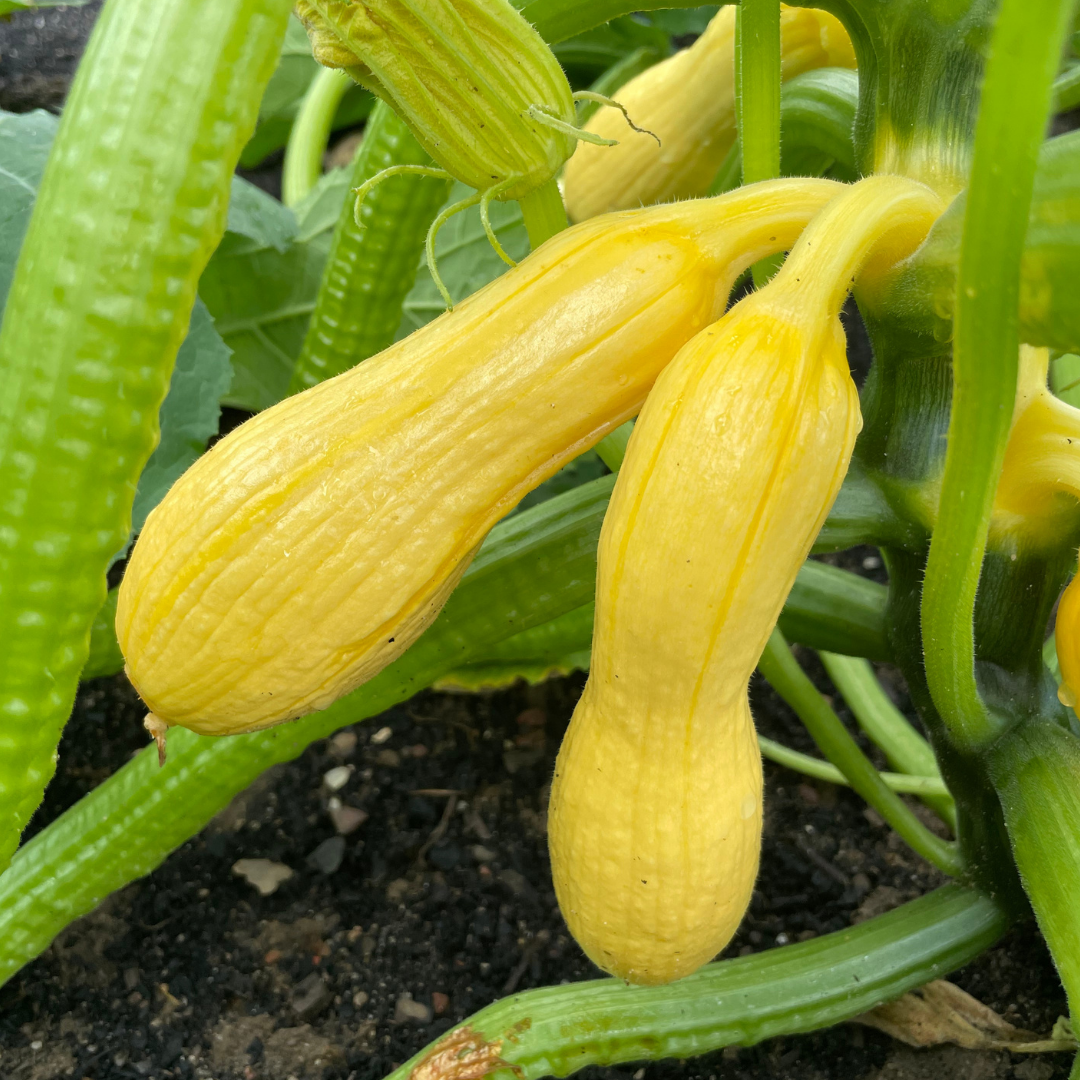Is crop rotation necessary for a small backyard garden? It's definitely beneficial for large-scale farmers who are growing acres and acres of a particular crop, but does it matter for us folks who are just trying to grow our own food?
There are certainly different opinions on the value of rotation in a backyard garden. Some gardeners swear by companion planting and having more a greater diversity of vegetables in a given plot -- and there's definitely plenty of merit to that technique.
But there are also quite a few advantages to rotating specific vegetables around your garden if you have the space to do so. Space is the key word here. If you have a single 20'x20' garden plot, it might be tough to rotate things and you probably shouldn't worry about it too much. But if you have multiple plots or even multiple raised beds, you might consider rotation for the reasons listed below.

Our TOP 3 Reasons for Crop Rotation
1. Different Nutrient Needs Per Crop
Different vegetables have different nutrient needs. Things like corn, onions, and cabbage are heavy feeders and will require substantial amounts of nitrogen. On the other hand, root crops like carrots, beets, and parsnips will benefit from a balanced proportion of major nutrients with plenty of potassium and phosphorous.
As a result, we feel it's best to separate crops based on their specific nutrient needs. In the fall and winter garden, we try to plant all our root crops (carrots, beets, parsnips) in the same plot because they'll need the same nutrients. In our spring garden, we don't want to plant corn in a plot with something that doesn't need much nitrogen.
2. Pest and Disease Pressure
In addition to having different nutrient needs, certain crops are more susceptible to specific pests than others. Squash, cucumbers, watermelons, and pumpkins are prone to developing fungal issues like powdery mildew and downy mildew. They also tend to be easy targets for vine borers and squash bugs.
If we grow those pest-susceptible crops in the same place every year, we will be compounding those pest issues year after year. Insect eggs and fungal spores can overwinter in soils and become an immediate problem the following spring. And so not rotating these crops will tend to increase the pest pressure to the point where it's tough to grow those particular crops. But if we rotate those pest-susceptible vegetables, we make things much easier on ourselves.
3. Growth Habits
The last great reason to rotate has to do with the specific growth habit of the vegetables you're growing. Crops like pumpkins and watermelon like to sprawl along the ground and require lots of space, whereas crops like corn or okree grow upright and don't require much space per plant. If we plant a vining crop like watermelons in the same plot of corn, we're likely to have issues with the watermelon plants stifling the corn plants.
So it's a good practice to plant crops with similar growth habits in the same plot. Plant vining crops together and plant upright plants together. This will make your gardening much easier and you won't have to worry about one vegetable smothering another.

Our Top 4 Rules When Planning Our Garden
In addition to those three great reasons for rotating crops around our vegetable plots year after year, we also have several "rules" that we like to follow when planning our spring garden. These rules aren't absolute by any means and they may not apply to every gardener. But they do help us determine where we will be planting all of the vegetables amongst our 10 backyard garden plots.
1. Don't plant the same family in the same spot in consecutive years.
This goes back to the second reason for rotating that we discussed earlier. Pest issues can compound year after year if you plant certain crops in the same spot. This is particular problem with the cucurbit and nightshade families of vegetables.
Cucurbits include crops like squash, melons, cucumbers, pumpkins, and winter squash. These vegetables are susceptible to many common diseases and insects that trouble gardeners across the country. The nightshade family includes potatoes, eggplant, peppers, and tomatoes. Just like the cucurbits, these are prone to disease and insect issues -- especially as temperatures warm in the summer months.
We try to rotate each family of vegetable crops that we plant, but we are especially careful with the cucurbits and nightshades. If you don't have much garden space and rotation is difficult, at least try to rotate these. It will make a big impact on the disease and bug pressure in your garden year after year.
2. Don't plant heavy feeders consecutively in the same plot.
We mentioned some of the heavy feeders above. These would include vegetables like corn, onions, and cabbage to name a few. These heavy feeders like lots of nitrogen and can deplete soils throughout their growth cycle. As a result, we try not to plant heavy feeders in the same plot in consecutive seasons.
For example, I wouldn't want to plant corn in the same plot that I had onions recently. We plant onions in the fall and harvest in the spring, right around the same time we're planting corn. Because they're such heavy feeders, onions can leave soils somewhat deprived. As a result, there wouldn't be much left for another heavy feeder if it was planted directly after the onions were harvested.

3. Plant field peas in poor soils.
If you have a spot in your garden that isn't very nutrient rich, don't worry about it too much. This is the perfect spot to grow field peas! We like growing a wide variety of field peas (also known as "cowpeas) in our gardens including zipper peas, crowder peas, and pinkeye peas.
These types of peas fix their own nitrogen and typically don't need a lot of nutrients to produce plenty of delicious peas. So take advantage of the fact that they're not very heavy feeders and plant them in a spot that may not have the highest nutrient concentrations in the soil.
4. Don't plant okree in a spot with high nitrogen levels.
Similar to field peas, okree is not a very heavy feeder. If you give okree plants too much nitrogen, they'll produce all leaves and no pods. You'll often find that okree plants produce the most pods when the plants are somewhat nutrient stressed.
So don't plant okree in a spot that has had a lot of nitrogen inputs recently. You wouldn't want to plant it where animals had been grazing or where you had applied manure or manure-based compost. Pick a spot that hasn't been amended with high-nitrogen inputs, and your okree plants will reward you greatly!
Don't Sweat the Rotation!
If your garden isn't large enough to rotate, don't sweat it. It's not a big deal. Take advantage of things like companion planting to reduce your natural pest and disease pressure. Focus on soil health as healthy plants tend to be more pest and disease resistant.
But if you do have the room to rotate, I'd highly suggest giving it a try. I think you'll find that your pest and disease pressure will be reduced, which is great news for any gardener. In addition, you'll be able to better cater to the individual nutrient needs of each specific vegetable you plant.

